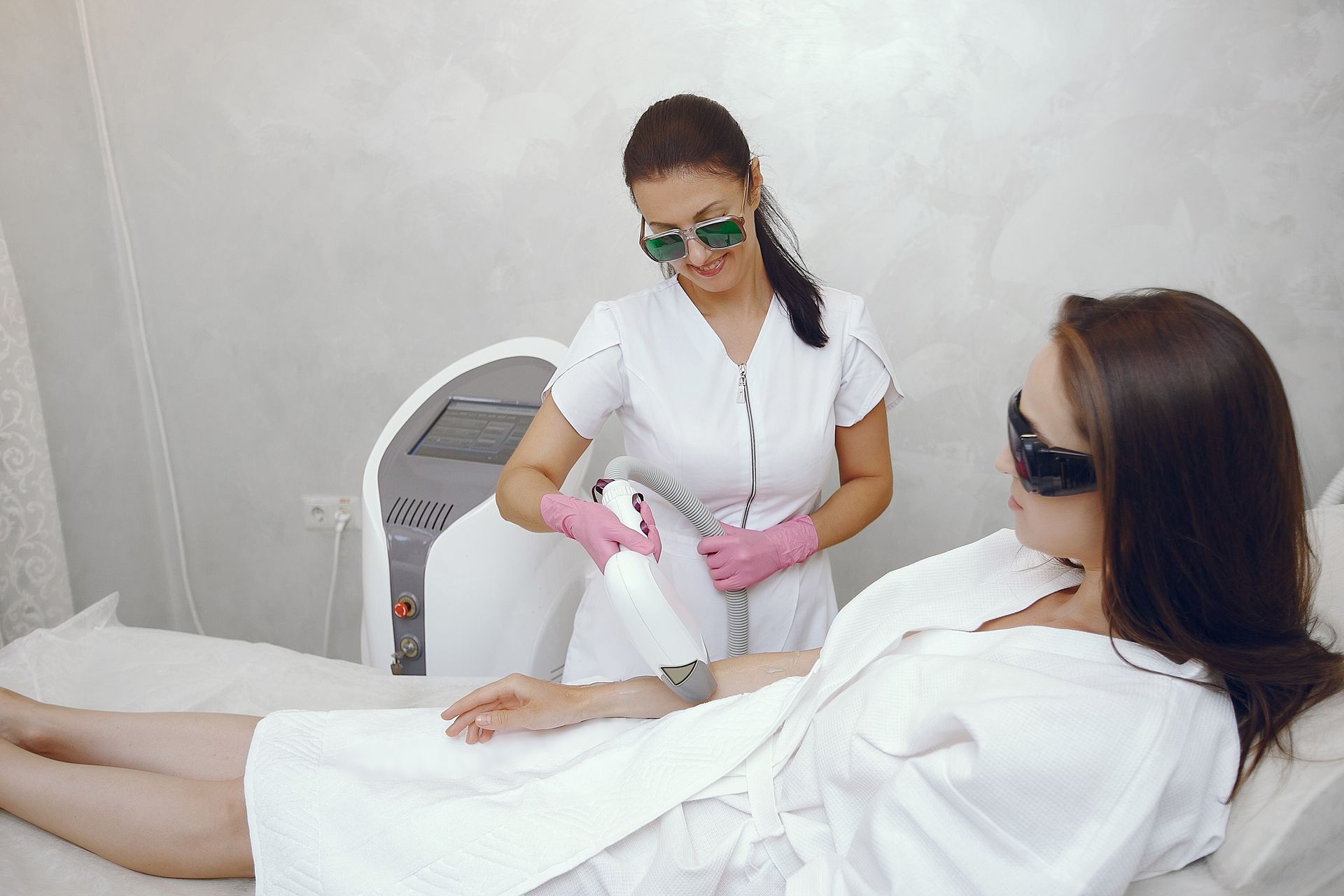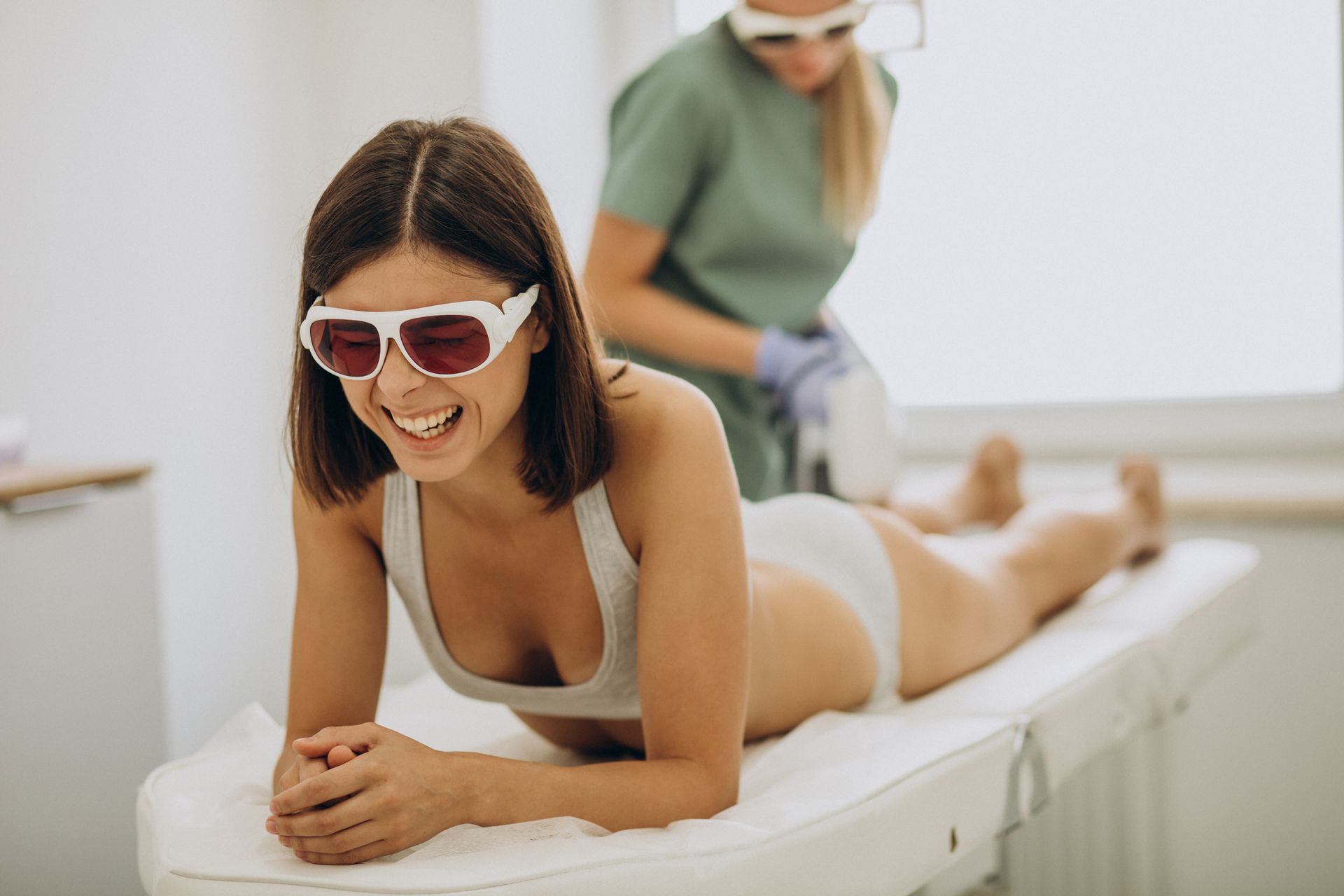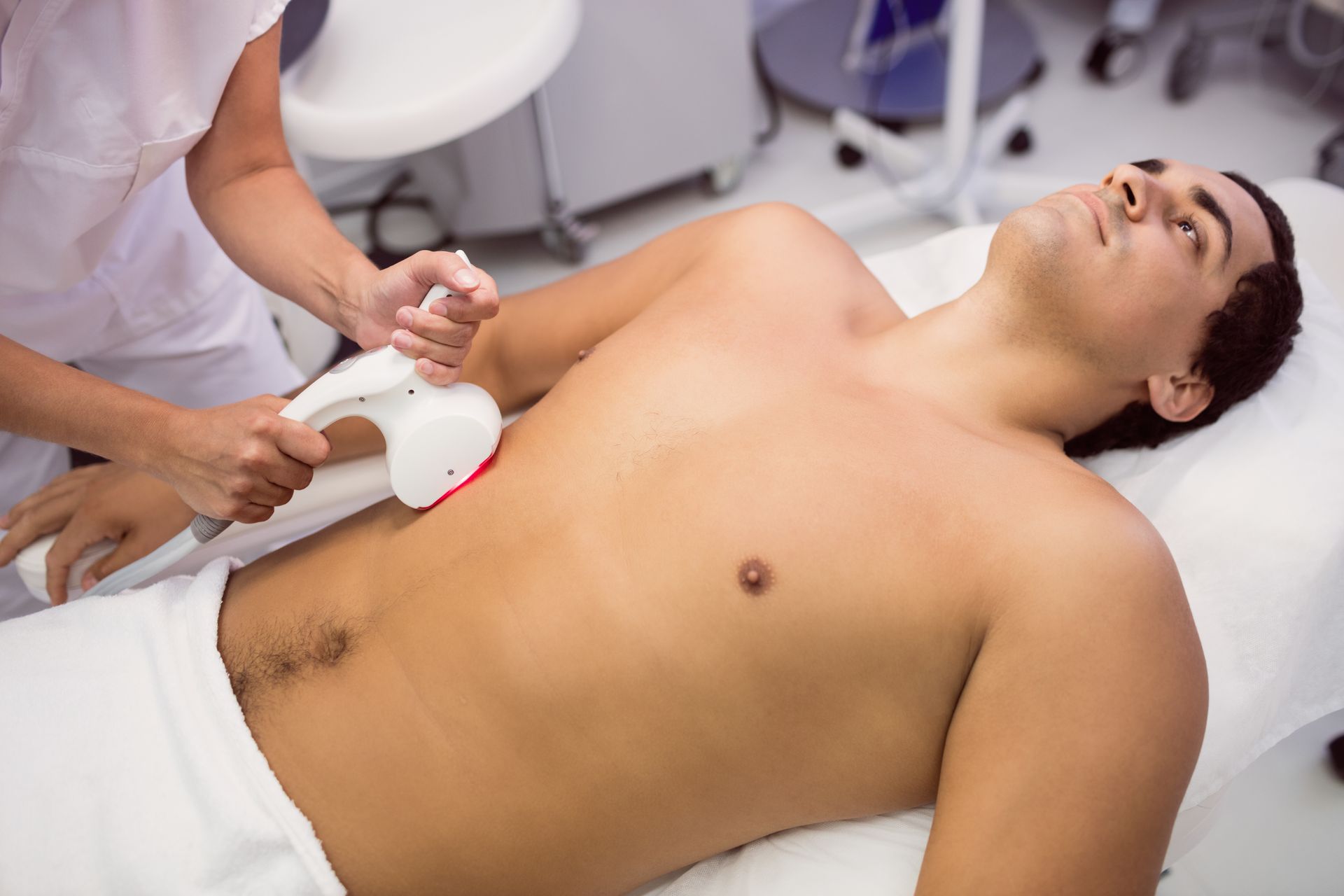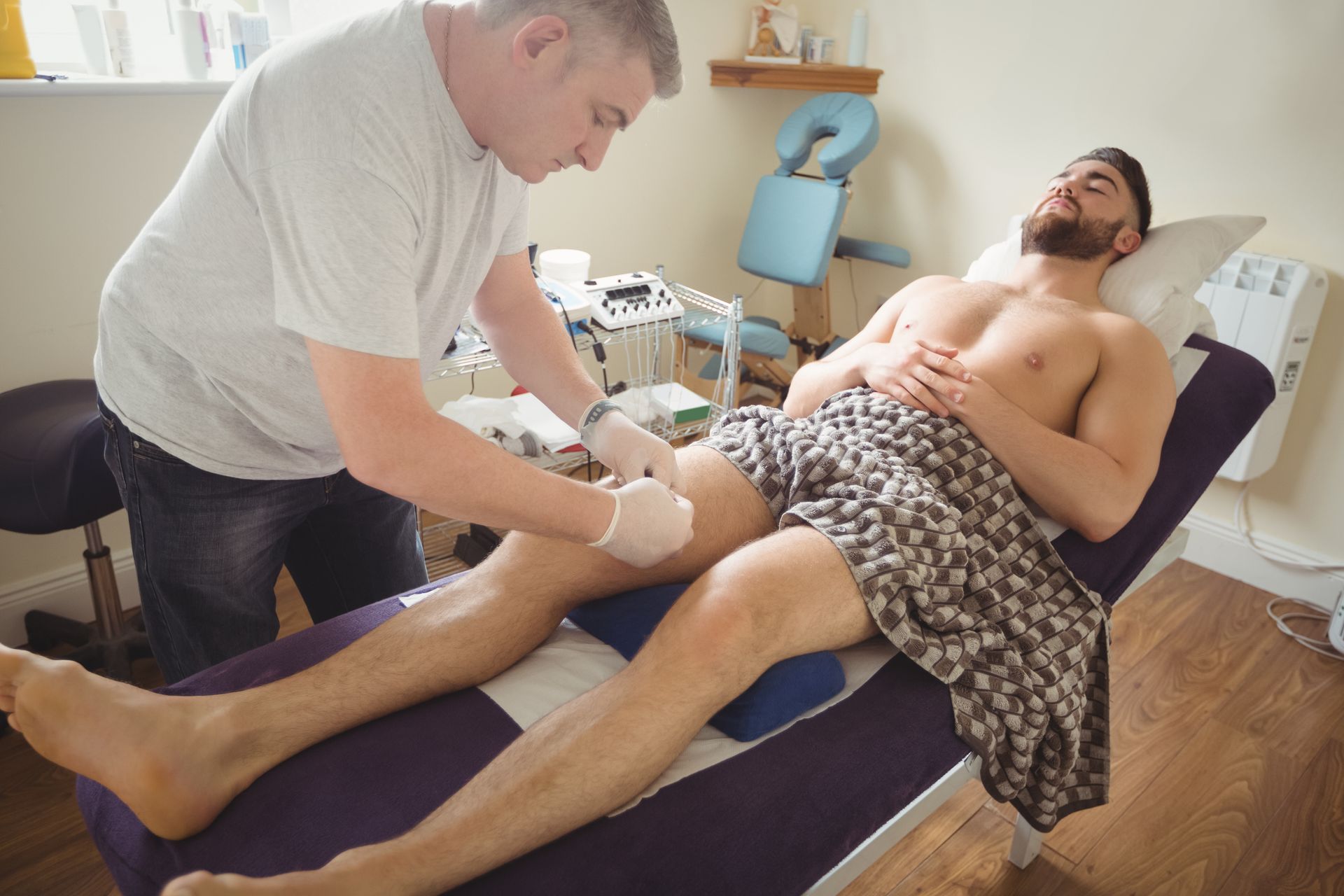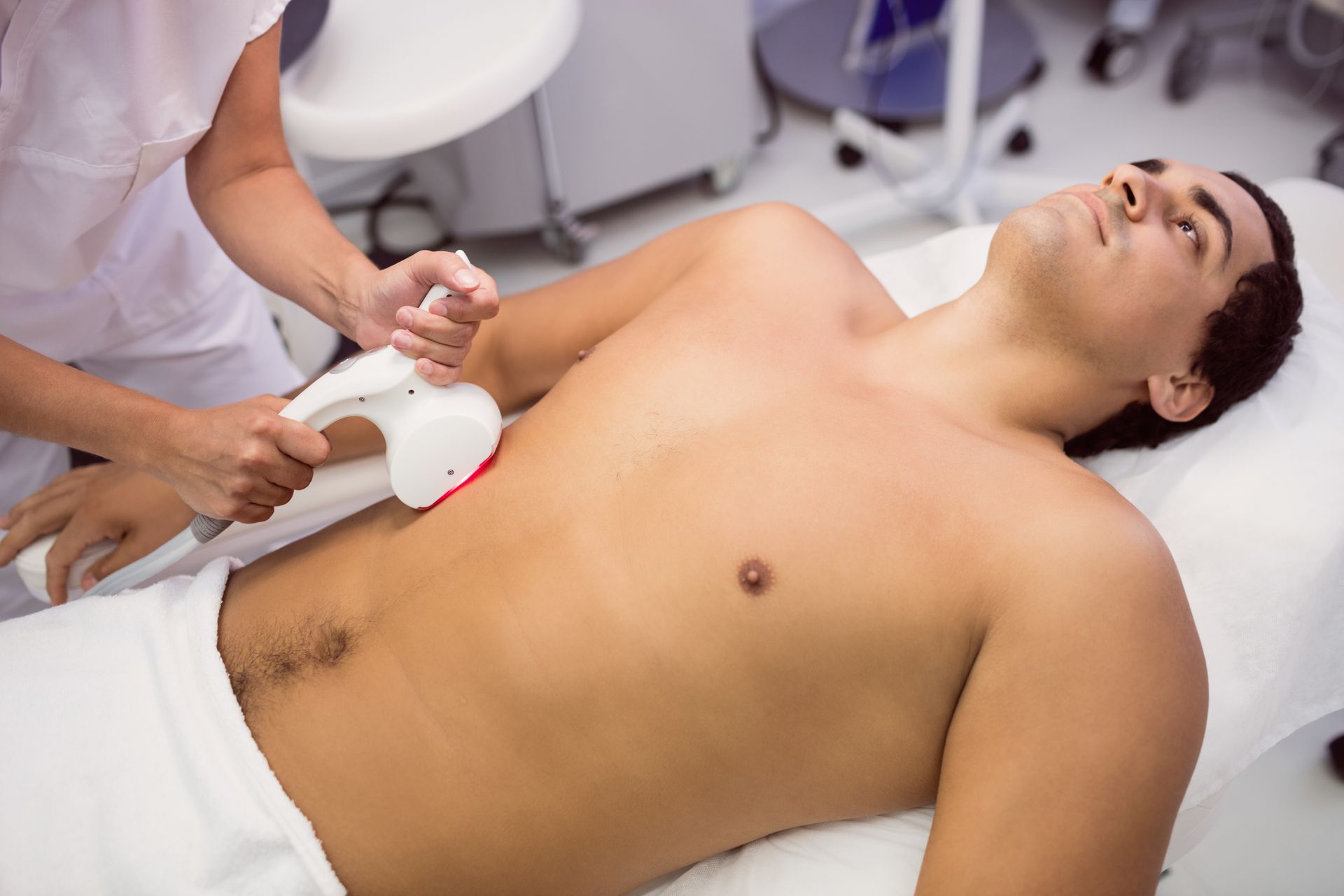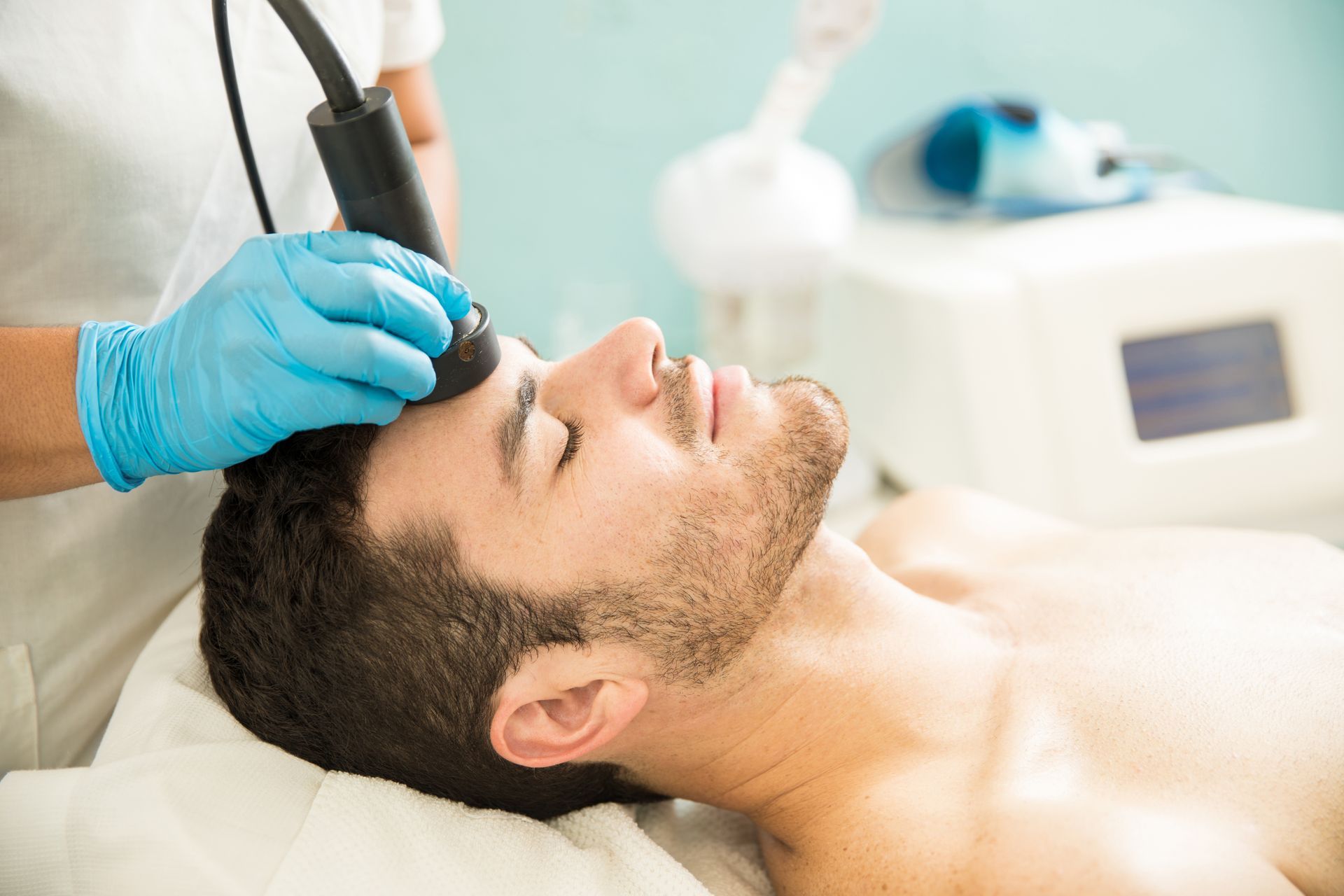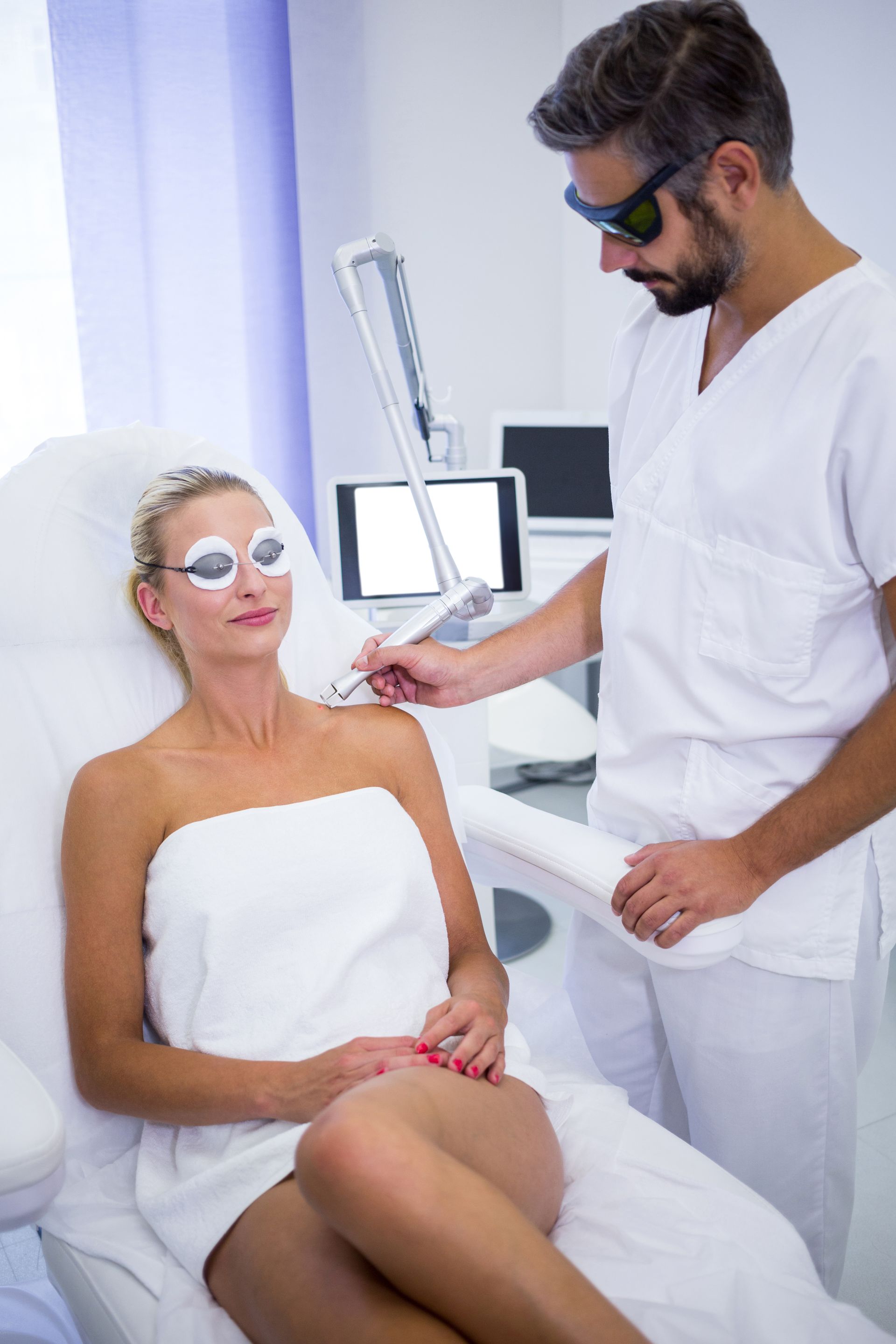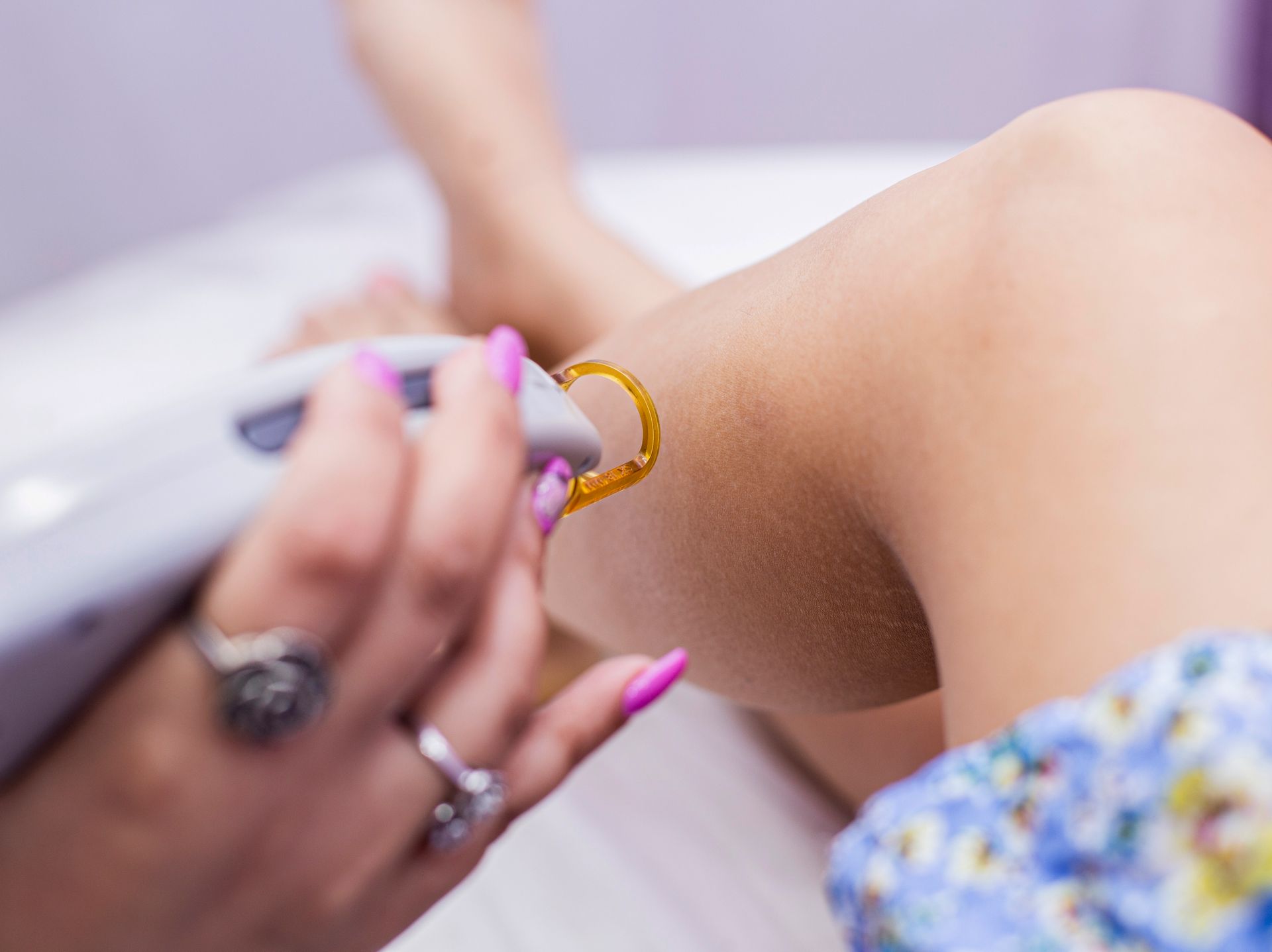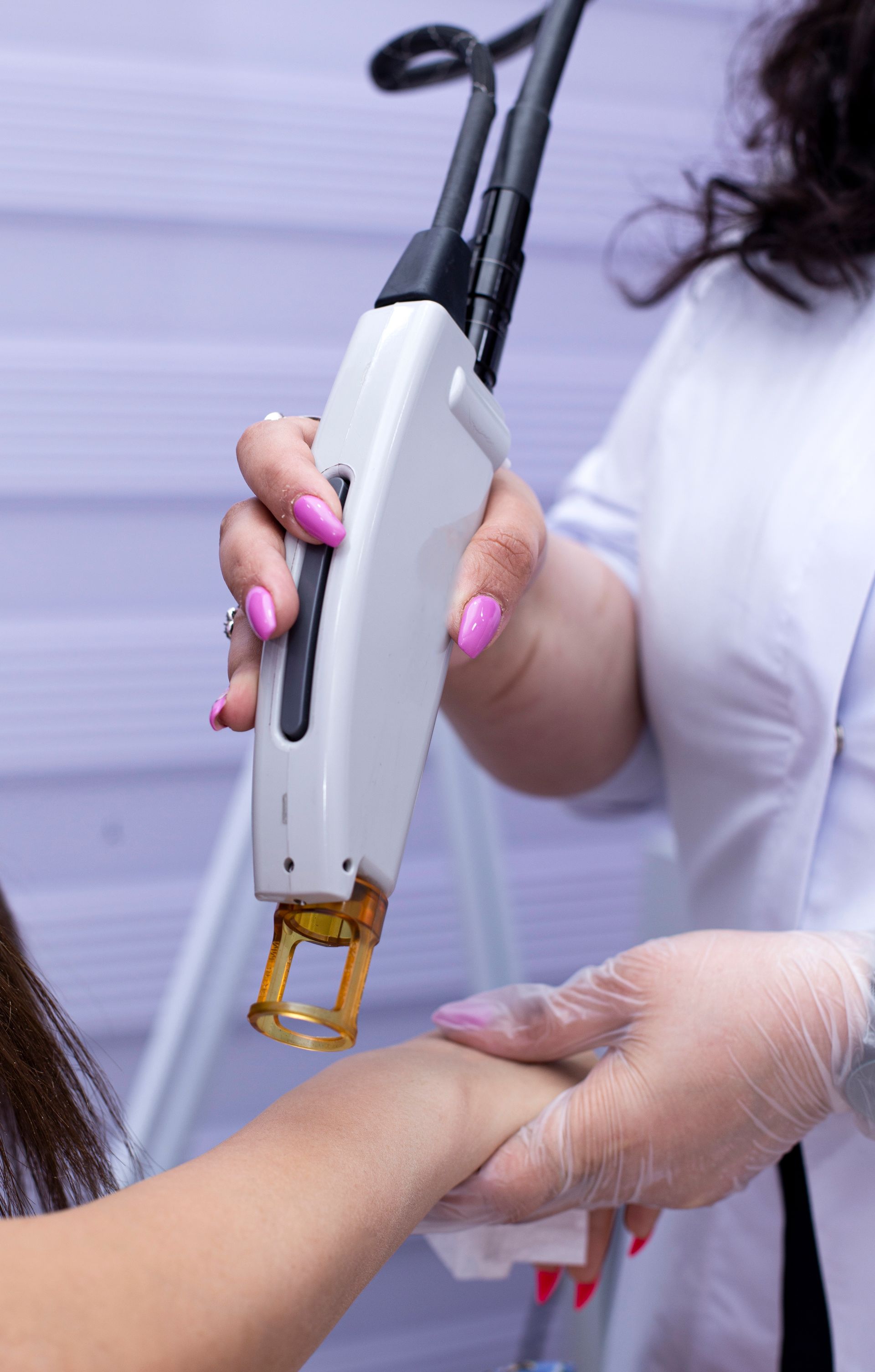Does Laser Hair Removal Get Rid of Strawberry Legs?
Strawberry legs, a term used to describe dark spots or pores that resemble the seeds on a strawberry, can be a frustrating cosmetic concern for many. These dark pores often appear after shaving and are caused by a combination of factors, including hair follicles, trapped oil, and dead skin cells. For those looking to eliminate this issue, laser hair removal is often suggested as a potential solution. But does laser hair removal really get rid of strawberry legs? In this article, we will explore what causes strawberry legs, how laser hair removal works, and whether it is an effective treatment for this common concern.
What Are Strawberry Legs?
Strawberry legs, medically known as open comedones, occur when hair follicles or pores become clogged with oil, dead skin, and bacteria. When exposed to air, these clogged pores darken, creating the characteristic black or dark brown spots on the skin, typically on the legs. Several factors contribute to the development of strawberry legs, including:
Shaving: Shaving can irritate the skin and leave behind hair follicles that darken when exposed to air. Using a dull razor or shaving without proper lubrication can also increase the likelihood of developing strawberry legs.
Dry Skin: Dry skin can exacerbate the appearance of strawberry legs. When the skin is dry, dead skin cells are more likely to clog pores, leading to the formation of dark spots.
Keratosis Pilaris: This common skin condition, also known as "chicken skin," causes small, rough bumps on the skin, which can sometimes be mistaken for or contribute to the appearance of strawberry legs.
Enlarged Pores: Some people naturally have larger pores, which can be more prone to clogging and darkening, leading to the appearance of strawberry legs.
How Does Laser Hair Removal Work?
Laser hair removal is a popular cosmetic procedure that uses concentrated beams of light to target and destroy hair follicles. The laser emits light that is absorbed by the pigment (melanin) in the hair, which then converts the light into heat. This heat damages the hair follicle, inhibiting or delaying future hair growth.
The process requires multiple sessions, typically spaced several weeks apart, to achieve the best results. Laser hair removal can be performed on various areas of the body, including the legs, underarms, bikini line, and face.
Can Laser Hair Removal Get Rid of Strawberry Legs?
Now that we understand what causes strawberry legs and how laser hair removal works, the question remains: can laser hair removal help eliminate strawberry legs? The answer is a bit nuanced.
1. Reduction of Hair Growth
One of the primary benefits of laser hair removal is the significant reduction in hair growth. By targeting and destroying hair follicles, laser hair removal can prevent the hair from growing back, which means there will be fewer hair follicles to become clogged and darken. As a result, laser hair removal can reduce the appearance of strawberry legs over time.
2. Minimizing Dark Pores
While laser hair removal can reduce the number of hair follicles, it does not directly address the other factors that contribute to strawberry legs, such as trapped oil, dead skin cells, or keratosis pilaris. However, with fewer hair follicles and reduced hair growth, there is less chance for pores to become clogged and darken, which can lead to a noticeable improvement in the appearance of strawberry legs.
3. Long-Term Benefits
The long-term benefits of laser hair removal may help in maintaining smoother, clearer skin. As the hair is reduced over time, the likelihood of developing dark spots or clogged pores is also reduced. Many individuals who undergo laser hair removal report a significant improvement in the appearance of their skin, including a reduction in the visibility of strawberry legs.
Complementary Treatments for Strawberry Legs
While laser hair removal can be effective in reducing the appearance of strawberry legs, it may not be a complete solution for everyone. To achieve the best results, consider incorporating additional skincare practices and treatments.
Exfoliation: Regular exfoliation is key to preventing clogged pores and reducing the appearance of strawberry legs. Using a gentle exfoliating scrub or a chemical exfoliant like salicylic acid can help remove dead skin cells and prevent them from clogging your pores.
Moisturization: Keeping your skin hydrated is essential for maintaining smooth, clear skin. Applying a moisturizing lotion or cream daily can help prevent dryness and reduce the likelihood of developing strawberry legs.
Proper Shaving Techniques: If you shave your legs, using proper techniques can help reduce the risk of developing strawberry legs. Always use a sharp razor, shave in the direction of hair growth, and use a moisturizing shaving cream or gel to protect your skin.
Topical Treatments: There are various over-the-counter creams and serums designed to reduce the appearance of dark spots and even out skin tone. Look for products containing ingredients like glycolic acid, lactic acid, or retinoids, which can help improve skin texture and reduce the visibility of dark pores.
Other Hair Removal Methods and Their Impact on Strawberry Legs
If laser hair removal isn't an option for you, other hair removal methods may also help manage strawberry legs. However, each method has its pros and cons.
Waxing: Waxing removes hair from the root, which can help reduce the appearance of strawberry legs by removing the hair follicle entirely. However, waxing can be painful, and there's a risk of irritation or ingrown hairs, which can exacerbate the issue.
Sugaring: Sugaring is similar to waxing but uses a natural sugar paste to remove hair. It's often considered gentler on the skin and can help reduce the occurrence of strawberry legs. However, like waxing, it requires regular maintenance and can be uncomfortable.
Depilatory Creams: Depilatory creams dissolve hair at the surface of the skin. While they can provide a smooth finish, they do not remove hair from the root, so they may not be as effective in reducing strawberry legs.
Is Laser Hair Removal Worth It for Strawberry Legs?
Deciding whether laser hair removal is worth it for treating strawberry legs depends on several factors, including your skin type, hair type, and the severity of your strawberry legs. Laser hair removal can be expensive, especially when multiple sessions are required. However, for those looking for a long-term solution to hair removal and strawberry legs, the investment may be worthwhile. Laser hair removal works best on individuals with light skin and dark hair, as the contrast allows the laser to target the hair follicles more effectively. If you have light hair or darker skin, laser hair removal may be less effective, and alternative treatments may be more appropriate.
Conclusion
While laser hair removal may not completely eliminate strawberry legs on its own, it can significantly reduce their appearance by targeting and reducing hair follicles, which are one of the main contributors to the condition. For many people, the reduction in hair growth and the long-term benefits of smoother, clearer skin make laser hair removal a worthwhile option for managing strawberry legs. However, for best results, it’s recommended to combine laser hair removal with other skincare practices such as exfoliation, moisturization, and proper shaving techniques. As always, consult with a dermatologist or skincare professional to determine the best treatment plan for your specific needs and concerns.
BOOK YOUR FREE SESSION
